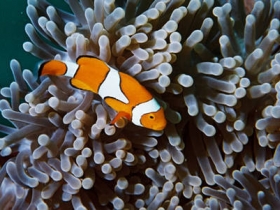Communication and perception in aquatic ecosystems
In aquatic environments, sensory perception is essential for numerous fundamental behaviors: food perception, predator or host detection, research of suitable habitats, communication with sexual partners and reproduction, migration, recruitment or metamorphosis. With its specific physicochemical properties, the aquatic environment dictates specific constraints to the organisms.
The axis “Communication and perception in aquatic environment” stems from the former axis “Chemical communication”. It will keep on dealing with chemoreception, the most widely used sense in organisms, but will also integrate other modalities like sound perception, mechanoreception, vision or thermodétection.
Inside BOREA, all teams are concerned with how their model species perceive elements of their environment. These elements can be abiotic (physicochemical factors, pollutants, minerals, vibrations…) and biotic from other species (preys, predators, pathogenic agents, hosts...) or intraspecific (congeners, sexual partners, siblings…).
Communication and Perception in aquatic organisms are investigated at different levels, with different tools: behavior observation, physicochemical analysis of signals, molecular description of their receptors, histological studies of the sensory cells and organs, physiology and development. Through this axis, specific skills from different teams will be conjugate in transversal projects. Interactions will be also made with other transversal axes, like “Migration and Dispersion” and “Global changes”.
Coordination : Sébastien BARATTE and Magali ZBINDEN


